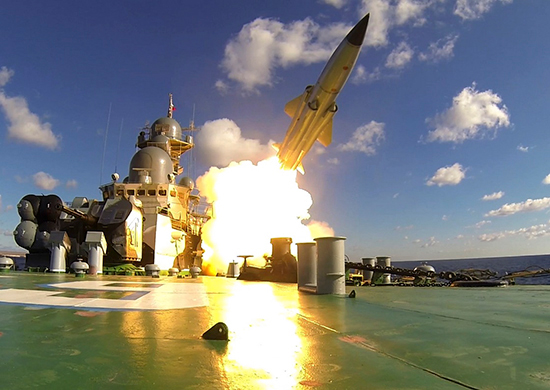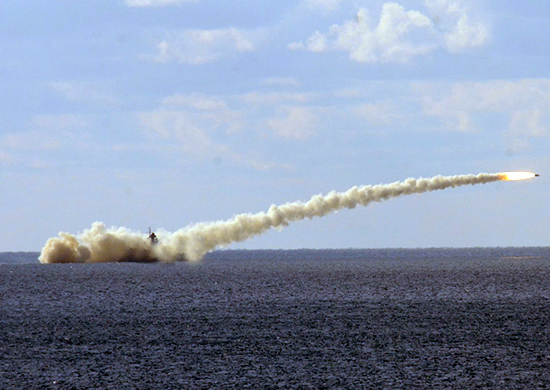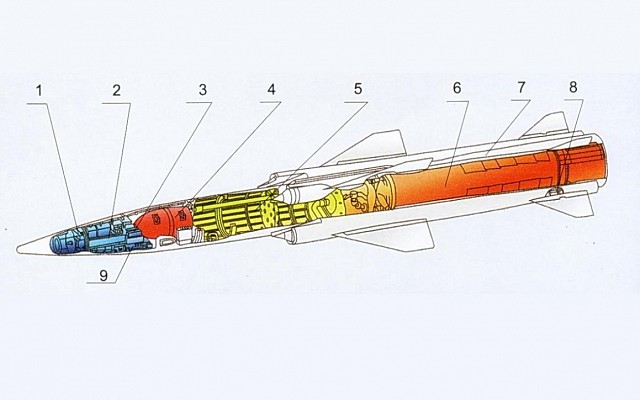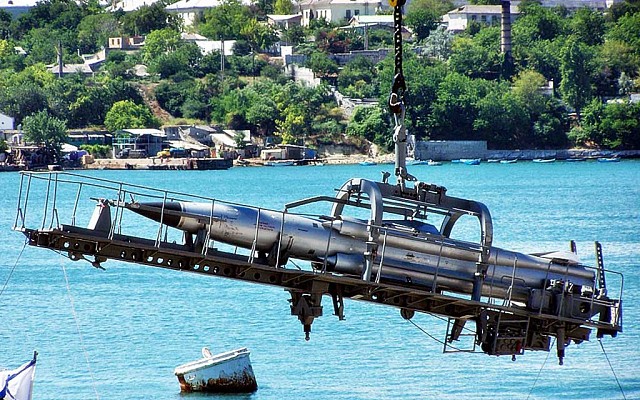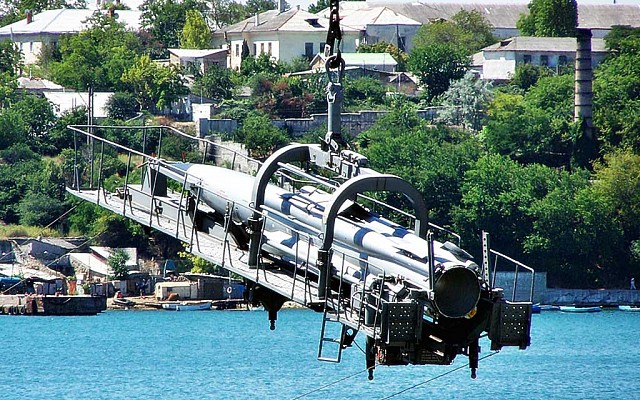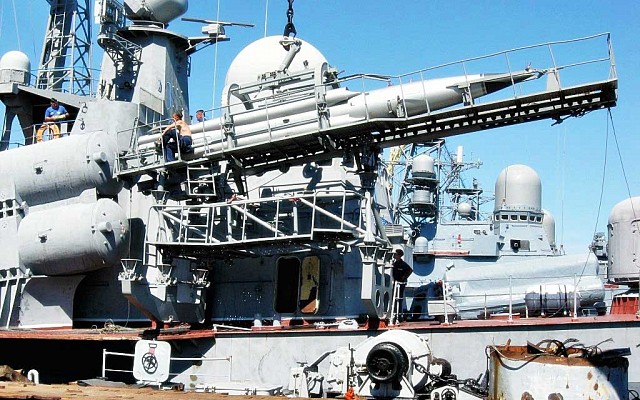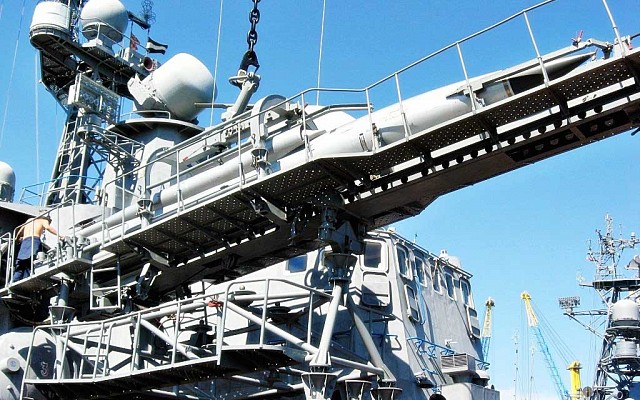P-270 Moskit
P-100 | NATO: SS-N-22 Sunburn
Overview
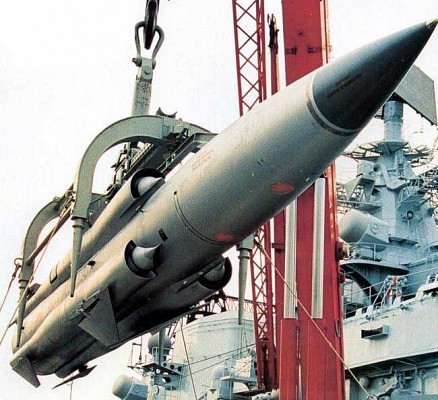
P-270 Moskit
Forward view of Moskit anti-ship missile seen during hoisting operations.
Source: www.bastion-opk.ru -
© Copyright lies with original owner
1978 - 1982 (Soviet state tests)
Russia - Progress plant, Arsenyev
P-100
P-270
3M80, 3M82 (GRAU index)
Russia
China
Description
Introduction
The Moskit is a late Cold War era supersonic anti-ship missile of Soviet origin. The Moskit was developed to arm guided missile destroyers and corvettes with anti-ship missiles that could engage carrier battle groups, piercing their significant air defense capability. The Soviet solution was to reduce the time and probability to detect and intercept the Moskit to an absolute minimum. This was achieved by combining a sea skimming flight pattern with supersonic speed.
Design
The Moskit is a long cylindrical missile with ramjet engine with four distinctive air inlets. This design was derived from the 3M9 (NATO: SA-6 Gainful) surface to air missile. The air inlets, wings and body are made of titanium in order to cope with the heat of air friction at high speeds in dense air at low altitude. Upon launch the Moskit is boosted to initial flight speed by a solid propellant rocket motor located within the combustion chamber of the ramjet. The booster motor is ejected by the air flow and then the ramjet engine takes over. The seeker is located in the radar transparent nose cone. This is followed by the guidance and radio altimeter unit. The warhead section is located between the guidance unit and fuel tank.
Guidance
The Moskit uses a radar seeker with both passive and active homing abilities. There is no secondary optical seeker. The Moskit uses inertial navigation towards the target area. Mid course updates can be send to update the target zone in which the missile will activate its radar seeker. These mid course updates are sent via datalink via the Ka-25Ts airborne radar helicopter, Tu-95RT maritime patrol aircraft or even the Legenda nuclear powered naval reconnaissance satellite system. The associated fire control computer aboard the ship allows for a four missile volley with 5 second intervals between missile launch. The Moskit may perform an S-pattern evasive maneuver in the final stage, resulting in reduced effective range and terminal velocity.
Firepower
The Moskit has a 300 kg warhead section and uses a delayed impact fuse. This is augmented by the kinetic energy of the missile and any fuel that is not yet spent. This makes a single hit of a Moskit effective against larger vessels. A Moskit may not immediately sink an aircraft carrier, but will most likely result in a mission kill. Effective range of the early 3M80 is about 90 km, with the 3M82 reaching up to 120 km. This is less than many smaller sea skimming missiles. However, the Moskit is and supersonic and sea skimming all the way from launch, making it very hard to detect. The 3M80MVE adds a high and low attack profile, exchanging stealth for an increased range of 160 km.
Platforms
The Moskit was used on several platforms dedicated to carry and launch a missile of this size. Due to its size it could not be as universally carried like the Western Harpoon or Exocet. The main platform was the Project 956 Sarych (NATO: Sovremenny) class guided missile destroyer. Several smaller vessels such as the conventional Project 1241.1 Molniya (NATO: Tarantul III) class and surface effect Project 1239 (NATO: Dergach) class corvettes were armed with Moskit as well.
Users
The Moskit was to be one of the main anti-ship weapons of the Soviet Union, alongside the larger P-500 and P-700 launched from cruisers. The protracted design period made that the Moskit entered service when the Soviet economy already was in a bad shape. With domestic acquisition behind schedule and lack of funds to finance exports the Moskit was never exported, not even to Warsaw Pact members. However, after the fall of the Soviet Union the Moskit was offered for export sales. China was the only customer, acquiring the 3M80E and 3M80MVE on two batches of two Project 956 destroyers. The Moskit remains in active service, but is no longer in production.
Variants
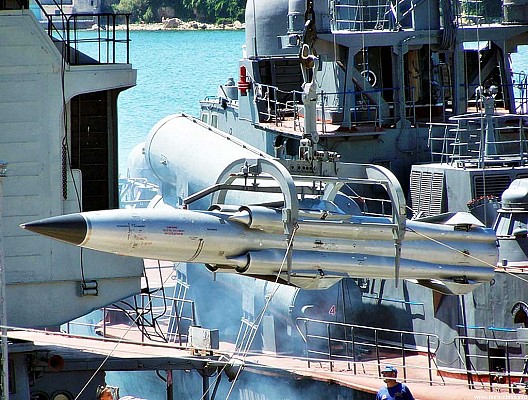
P-270 Moskit
Moskit anti-ship missile seen in a loading cradle during reload operations on a Russian navy Project 1231.1M Molniya (NATO: Tarantul III) class corvette.
Source: en.missilery.ru -
© Copyright lies with original owner
Soviet variants
Export variants
Media
Details
Platforms
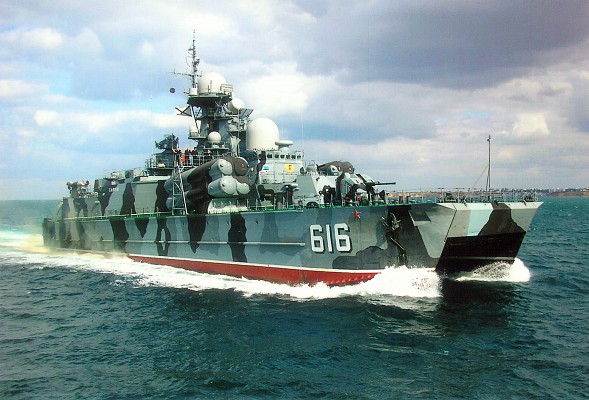
Project 1239 Sivuch class
Soviet surface effect guided missile corvette. Two ships in class.
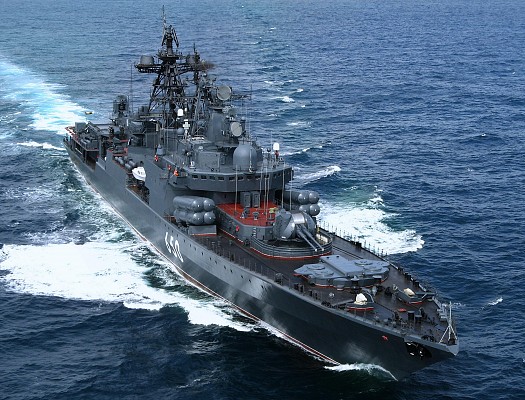
Project 1155.1 Fregat-M class
Soviet general purpose destroyer with emphasis on anti-submarine warfare. Single ship in class. Known by NATO as Udaloy II class.
